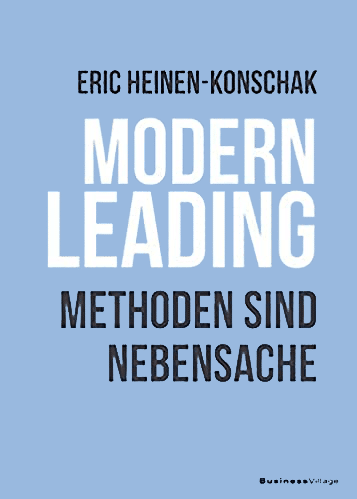Transformation of IT into the agile world
My rollercoaster ride in the agile transformation of GIZ’s IT
The hand cyclist Errol Marklein rolled onto the stage. I was very curious to see how the 80 employees in my department would react. Would he be able to create an appetite for the necessary changes and a spirit of optimism with his speech – and would that carry the change to a constantly learning organisation?
The new strategy of the IT department of the Deutsche Gesellschaft für Internationale Zusammenarbeit (GIZ) GmbH1 had been adopted by the board of directors a few weeks before Errol Marklein’s appearance. The department’s employees were to work in a more agile way. In the next two years, it was a matter of acquiring the necessary skills and knowledge. Up to now, the staff had been strong in keeping themselves individually up to date with the latest technical knowledge of their IT systems. Agile working, however, requires more. Constant self-reflection as a team is necessary. Have we achieved what we wanted to achieve? Were the ways of working helpful or did they need to be changed? Becoming a learning organisation was a big culture change for IT staff.
My management team and I as the head of the IT department wanted to arouse the curiosity of the staff and the desire for new ways of working, so that they would acquire the necessary, new competences themselves in the future.
It starts with you
How do you create a spirit of optimism during a transformation? We planned an event as a kick-off. Inspiring talks by top speakers combined with small workshops to try out the methods presented. And as a highlight, a motivational coach. But we wanted to engage someone with a connection to our staff. So I asked one of our employees, who was a wheelchair user and a highly committed athlete. Among other things, he established the handbike competition at the Frankfurt Marathon. He was immediately enthusiastic about the idea and recommended Errol Marklein, also a wheelchair user and successful athlete and entrepreneur.
We gathered all the IT’ers for the kick-off. I gave the opening speech and made clear the need for change and the goal of the transformation. Then came the three external speakers who imparted initial methodological and personal skills. Errol Marklein made the start. In his moving story he coined the slogan for the next weeks: “It starts with you”. He told of his serious car accident at 17, the resulting paraplegia, his development into a top athlete, despite everything. Multiple Olympic gold medallist, coach of the German national handbike team and a successful entrepreneur. Our staff listened with rapt attention and many wanted to talk to him directly in the mini-workshop that followed.
The workshop continued with a lecture on artistic work and what companies can learn from artists. In the mini-workshop that followed, four works of art were created from beans, peas and spaghetti and afterwards the teams gave each other artistic feedback. It was all about their own perception and the feelings that arose. There was neither good nor bad. This positive form of feedback promoted creative cooperation.
A lecture on Effectuation rounded off the method overview. The scientifically described entrepreneurial way of shaping an uncertain future encouraged many to try out the effects of this attitude on innovation and error culture in the following mini-workshop.
I myself did not lead any workshop and could drop in anywhere. Wherever I went, I felt a great energy and passion. It was a terrific start for the transformation.
Inspiration and learning
For the actual deep and lasting transfer of competences and attitudes, we took a two-pronged approach. On the one hand, we wanted to offer fixed trainings and on the other hand, we created a regular format with short impulse lectures followed by discussions.
With a colleague we offered a four-part Effectuation training. We limited the number of participants to 10. The day after the kick-off workshop, the course was already fully booked and there was a waiting list. Together with effectuation-intelligence2 we even developed an external certificate “Effectuation-Practioneer”, which made the training even more attractive.
Our test manager also encouraged training to become an internally certified test manager, where participants learned the skills to develop a bug-free IT system with little effort. Her courses were quickly fully booked and remained in high demand for the next few years.
Shortly after the terrific kick-off workshop, we started the series of impulse lectures. Every four weeks there was a lecture with a colourful mix of topics relevant to agile working. We crisply called them “IT Inspiration Talks”.3 Our own talks were mixed with those of external speakers. The topics ranged from non-violent communication according to Marshall B. Rosenberg4 and a systems-theoretical view of the world to tips for change in IT projects.
To increase motivation, we came up with a playful element: the IT method quilt. After each event, participants could have their participation signed off. After one year, there was supposed to be a certificate; unfortunately, this was the first failure in our transformation project. A few staff members had got a certificate of attendance at the beginning, but even those few soon stopped doing so.
Attendance at the IT Inspiration Talks also stagnated at around 25-30 employees. And it was always the same ones. From some teams, no one ever attended. Fortunately, our test manager reached out to other participants in her training series with test workshops. But even from these, some teams stayed away. The word on the street was that it was all a joke, not relevant and a distraction from the work. I was frustrated and didn’t know what to do.
Self-organisation creates an even broader basis for IT transformation
We asked ourselves how to engage all teams in the transformation and decided to take a radical step: at the annual external meeting 8 months after the kick-off, management did not prepare any content! Instead, we did an IT internal barcamp.5 And with that, we actually reached all teams. Much was discussed over the two days in numerous one-hour workshops. Knowledge was imparted and topics were worked on together. The entire event was driven by the interests and commitment of the employees. It was such a success that we kept the format for the next few years.
In order to reach even more staff from all teams, we broke with the principle of purely voluntary participation. For the second round of our Effectuation training, we specifically approached two participants from teams that had previously kept a very low profile.
We had already encouraged more self-organisation a little before the start of the new strategy. Everyone could start topics that were important to them. The prerequisite was that these were transparent to all and that important routine topics did not fall under the table.
And indeed, this freedom was used by a small group of employees who wanted to learn agile project management, try it out and introduce it in the GIZ. Very quickly, the “agile eleven” formed. They got themselves an agile coach, held an IT Inspiration Talk and initiated training for another 12 employees.
A positive balance after two years
After two years, this phase of implementing the IT strategy ended. By then, more than 50 of the 80 employees in the IT department had taken part in training measures and dealt with the competences for agile working. We wanted to train at least a quarter of the staff in Scrum, Effectuation and Test Management in each of these two years. But much more important to us than training was the application in practice. Already in the first year, there were the first successful lighthouse projects. In the second year, a quarter of the projects with the new methods were already led by learning teams. All this happened voluntarily and in a self-organised way. The existing expertise of employees was used and only sparingly and specifically supplemented by external coaches or impulse providers. In this way, we got the new IT strategy off to a good start.
My most important experience:
- Invite your employees to actively shape the change process or transformation from the very beginning. If you are invited to shape, you also take responsibility.
- Set a good example and show your willingness to change and learn. If you lead the way, you will start a movement.
- Regularly review how you are progressing as a team. Defining goals will help.
- Change your approaches if they are not working. But be transparent about it and stick to your vision, as this provides clarity for the indecisive, especially if there are headwinds.
Notes:
[1] Deutsche Gesellschaft für Internationale Zusammenarbeit (GIZ) GmbH
[2] effectuation intelligence
[3] Thank you Dirk Dobiéy for the name 🙂
[4] Nonviolent Communication
[5] A barcamp is an open conference whose content is designed by participants themselves.
Good leadership includes other aspects such as resolving conflicts, team development, improving processes, developing one’s unit and and very importantly, managing oneself. If you are interested in these topics, we would like to recommend the German book Modern Leading – Methoden sind Nebensache by Dr. Eric Heinen-Konschak.
Dr Eric Heinen-Konschak has published another article in the t2informatik Blog:

Dr. Eric Heinen-Konschak
Dr. Eric Heinen-Konschak has 30 years of experience as a manager. From 2006-2018, he headed the IT department of GIZ, and before that he held various management positions at Lufthansa and Lufthansa Systems. Today, he leads a digitalisation project in GIZ’s development cooperation and helps executives and teams on their way to the agile world on a part-time basis.

